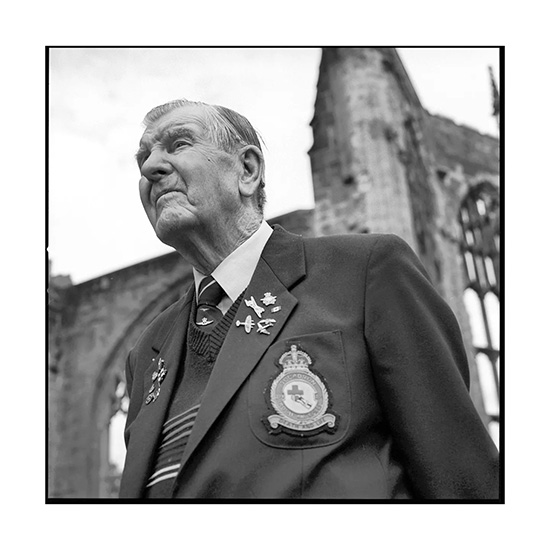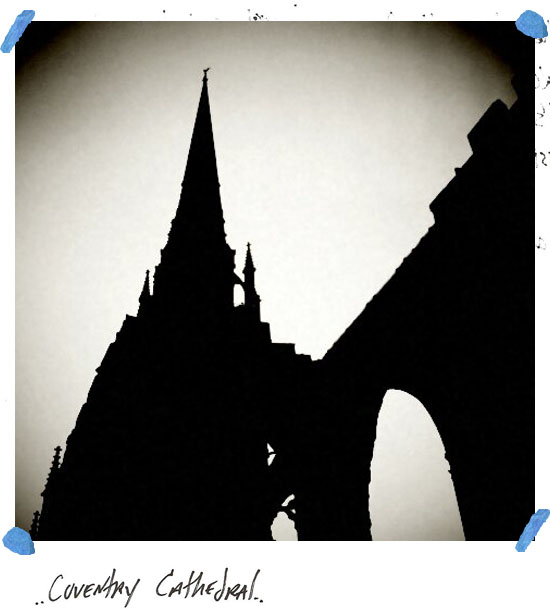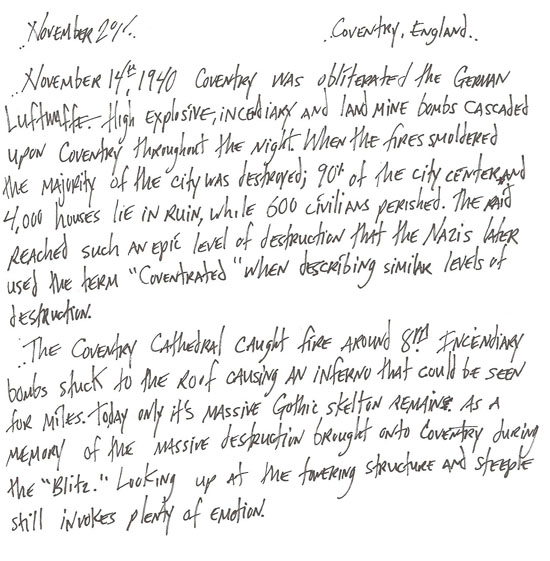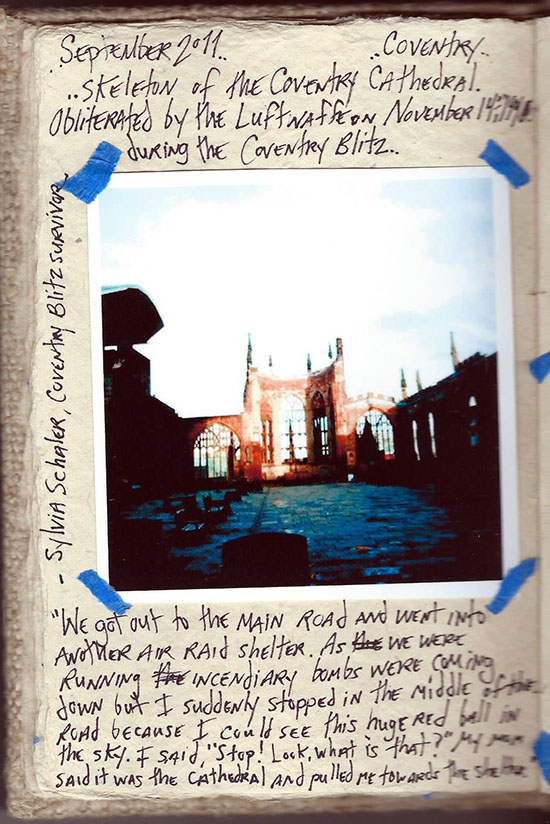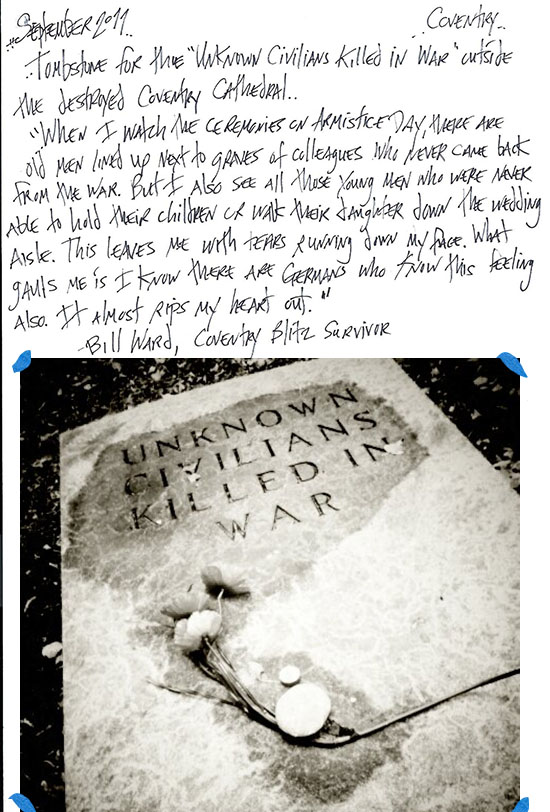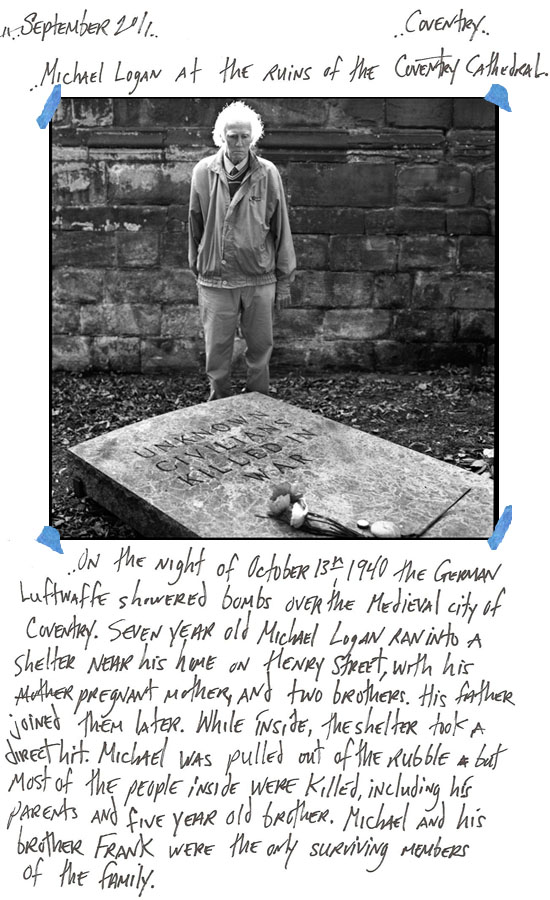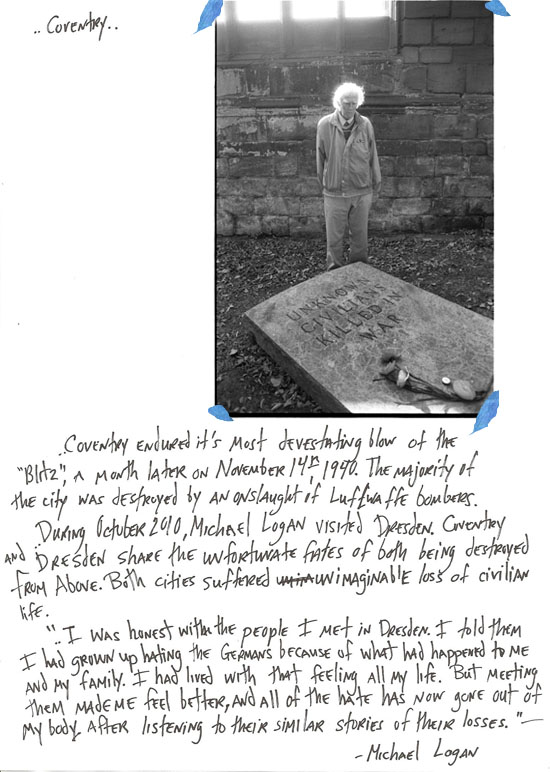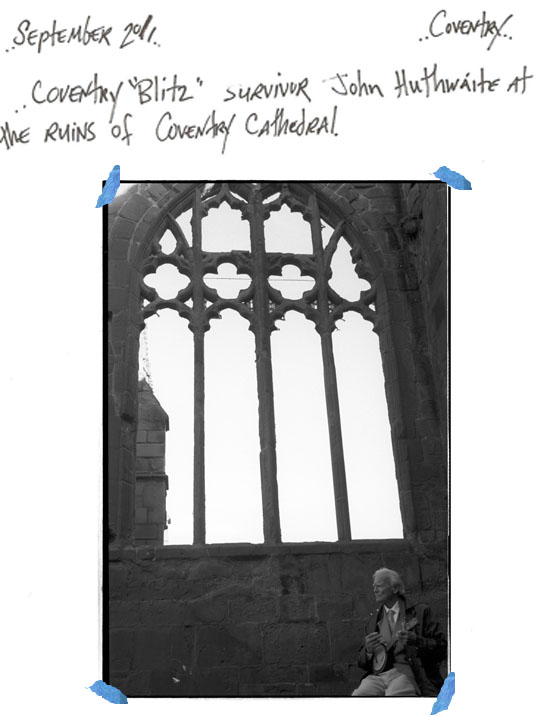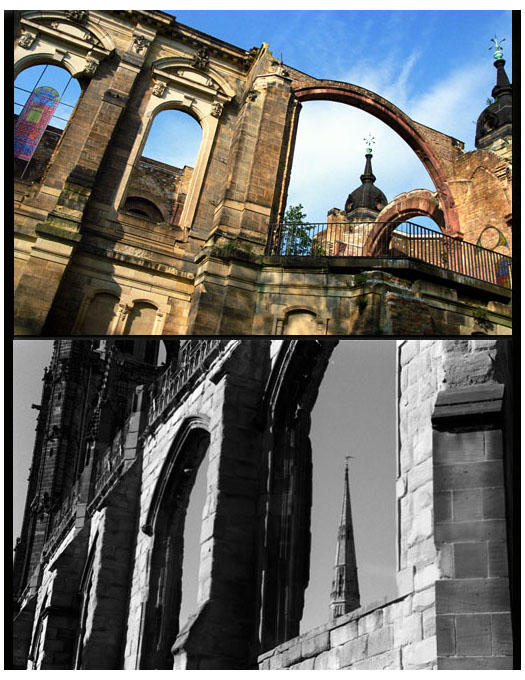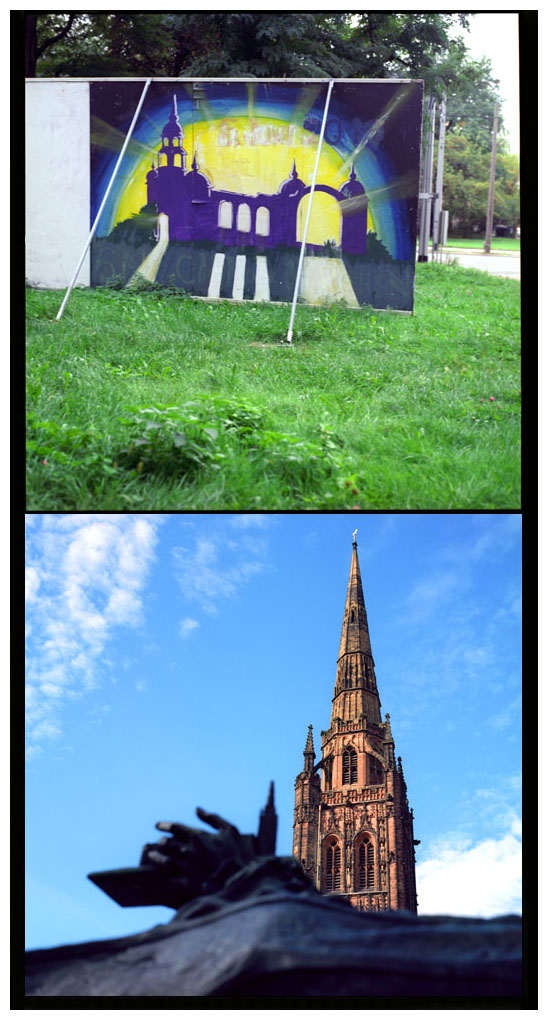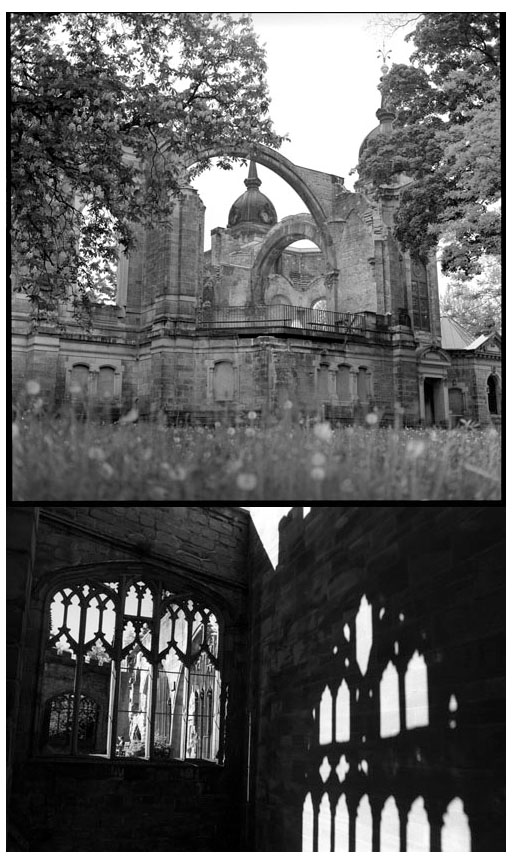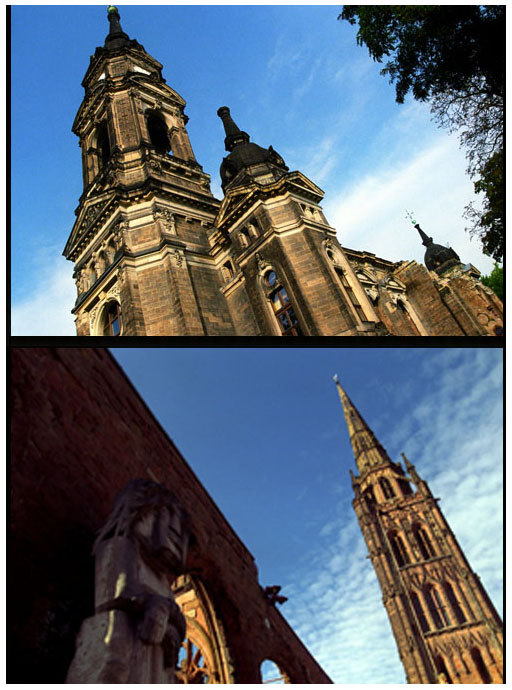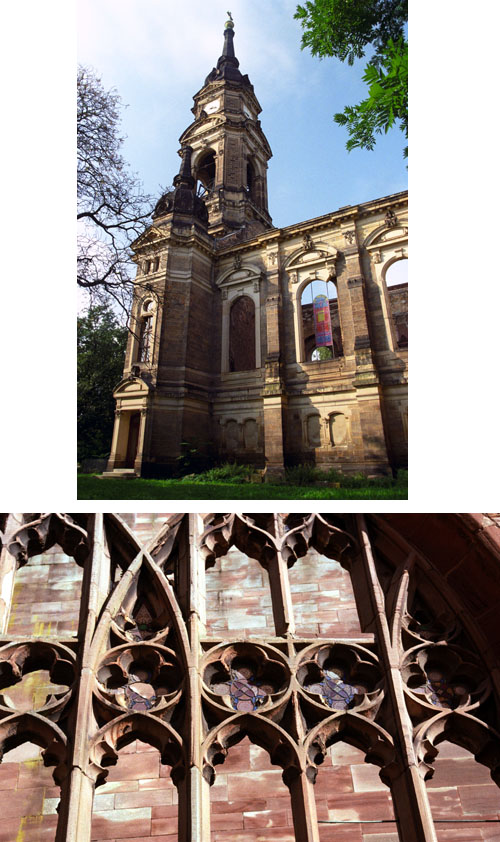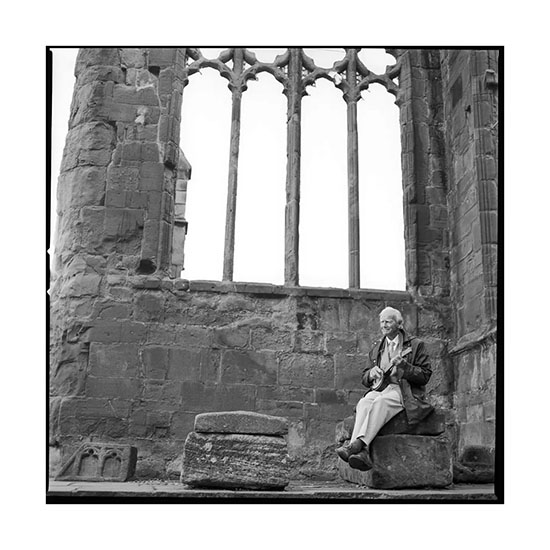
“I was about ten years old when Coventry was destroyed. After the raids, we used to go out and play in ruined houses. We used to find a lot of shell fragments and bits of bombs. Sadly, damage was also caused by our own anti-aircraft shells. The shrapnel from the shells exploded in the sky and showered down onto the roofs.
Sometimes, after the raids, they would bring in crashed planes. I remember getting into the cockpit of a Messerschmitt 109. There was hatred against the Germans. Once an airplane went down, the pilot was pitchforked by a farmer.”
-John Huthwaite, Coventry blitz survivor’
The British city of Coventry was bombed several times during the Second World War by the German Luftwaffe. The most devastating of those attacks came on the evening of November 14th, 1940. During “Operation Moonlight Sonata,” high explosive, incendiary,and landmine bombs cascaded upon the city. When the fires smoldered, the majority of the city lay in ruin. The city center and more than 4,000 homes were destroyed. The raid had resulted in such epic levels of destruction for the time that the Germans used the term “Coventrated’ when later describing similar levels of destruction to enemy cities.
This portrait is a part of my From Above project, which is a collection of portraits and reminiscences of atomic bomb survivors and firebombing survivors from Dresden, Tokyo, Coventry, Rotterdam and Wielun. A portion of From Above is permanently exhibited at the Nagasaki Peace Memorial Hall for Atomic Bomb Victims. It has also been exhibited in museums and exhibition spaces throughout Asia, Europe, North America and including the United Nations.
From Above was released as a limited edition book that was sold at PhotoEye.com. The book is sold out on the site, but I have the last 20 copies that can be bought directly from me. Contact me through social media or at paule.saviano@gmail.com if you’re interested in purchasing a book.
